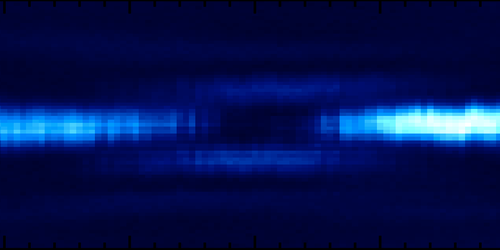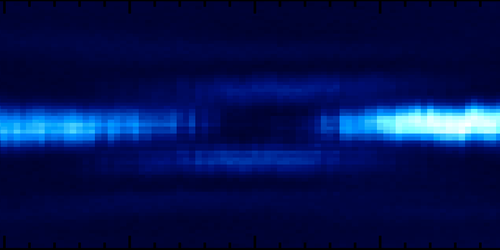Lightscape Traps Rydberg Atoms in the Dark
Neutral atoms in highly excited Rydberg states could be the next big thing in quantum computing, but only if the atoms can be held in place. Optical tweezers (laser traps) can hold ground-state atoms, but they repel Rydberg atoms, pushing them out from the bright focal point of the laser beams. Now, Daniel Barredo and colleagues at the Institute of Optics in Palaiseau, France, demonstrate a holographic method that can trap individual Rydberg atoms in 3D “lightscapes.” The team held the atoms in place with micrometer-scale precision, a requirement for quantum-information applications. Previously, 3D confinement was only achievable with millimeter precision using magnetic or electric fields.
The researchers started with a single neutral rubidium atom, which they trapped using standard optical tweezers. Deactivating the tweezers, they excited the atom to the Rydberg state. The team then immediately recaptured the atom at the center of a 3D light-intensity pattern, created by diffracting a laser beam from a spatial light modulator, where the waves interfered to form a dark spot.
Barredo and colleagues found that they could hold an excited atom for as long as the Rydberg state was maintained—about 228 s at room temperature. During this time, they used microwaves to shift the atom between two Rydberg levels, a transition that the researchers say could one day be used to represent a qubit in a quantum computer. The team also demonstrated interactions between Rydberg atoms by making two atoms in adjacent traps exchange states. Such interactions are necessary to create quantum logic gates.
This research is published in Physical Review Letters.
–Marric Stephens
Marric Stephens is a freelance science writer based in Bristol, UK.





